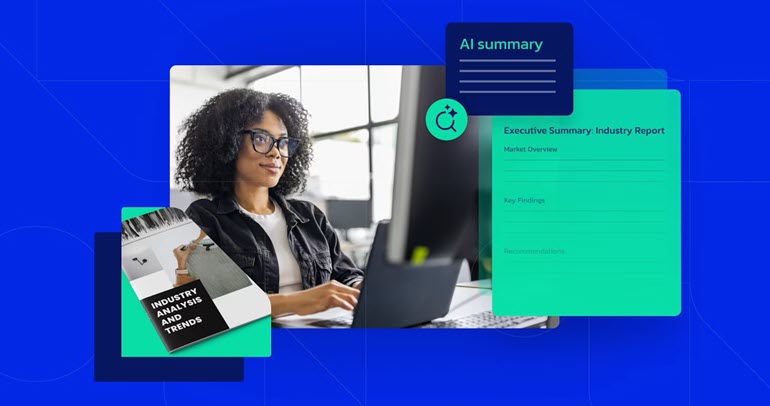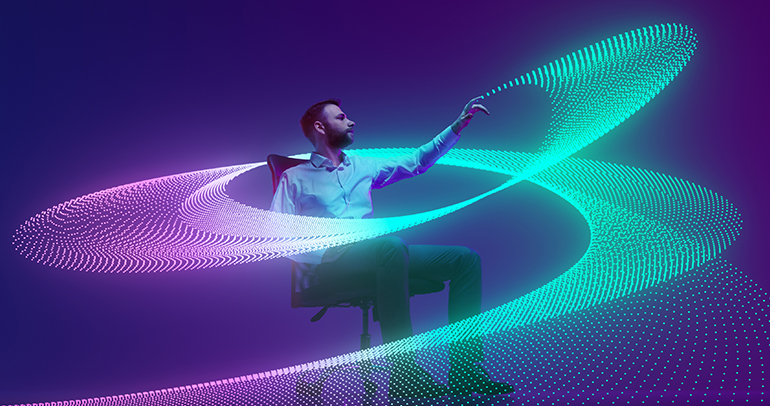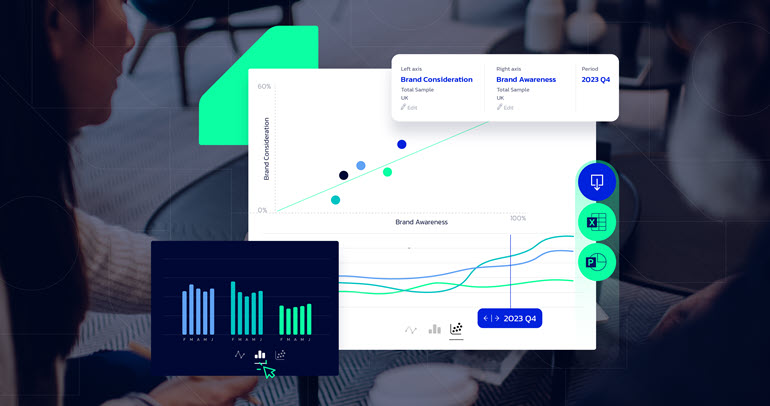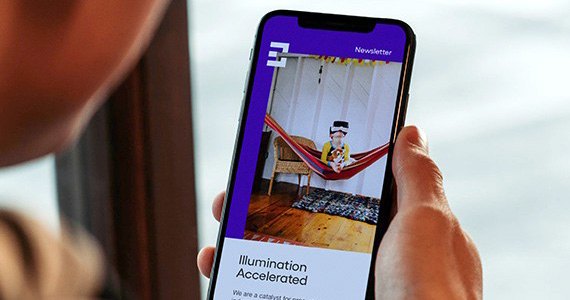
In 1969, we made it to the moon. The extraordinary collaboration between astronauts, engineers, scientists and mission controllers achieved the seemingly impossible and changed the world as we know it.
There’s a reason we work in teams. More brains on a task accelerate processes. Different minds bring diversity of thought and skill sets. Our varied lived experiences offer nuanced human perspectives and context to what we are trying to achieve.
While Armstrong, Aldrin and the thousands of collaborators who made the moon landing possible are rightly credited with an extraordinary feat, let us not forget the critical role of the Apollo Guidance Computer, which calculated trajectories and controlled descent. However, when the landing site proved unsafe, it was Neil Armstrong’s human judgment that took over, steering the module to safety.
This historic moment is a powerful lesson that’s applicable to AI-human in collaboration—combining the complementary strengths of humans and machines to overcome limitations and achieve greater outcomes.
The AI-Human Collaboration Challenge in Insights
Today, as AI’s role in insights becomes more prominent and scrutinized, we face a similar question: how can we collaborate with AI as a teammate to enhance human expertise in research without compromising on quality?
According to Qualtrics, almost 90% of market research professionals already use AI tools regularly. AI is not just a peripheral tool—it is core to research workflows, with 83% of insight professionals planning to increase investment this year. Additionally, nearly three-quarters of insight professionals report that their organization relies significantly more on research and insights today than last year. Rising demand is pressuring research teams to deliver faster, deeper and more actionable insights.
As AI’s global market size grows exponentially, its role in research continues to expand. But how can insight professionals harness it effectively for AI-powered market research?
In recent Peer Connection sessions, we met with insights leaders to explore how they’re leveraging AI while maintaining clear boundaries where AI cannot replace human expertise. We’ve distilled these discussions into a loose framework, showing how different AI-human collaboration modes suit different research tasks.
As one proverb puts it, “If you want to go fast, go alone. If you want to go far, go together.”
AI and Human Collaboration in Insights: A Strategic Framework to Guide Market Research Professionals
Effective collaboration between humans and AI depends on leveraging their respective strengths to maximize impact across different types of tasks. This strategic framework outlines three key roles AI can play alongside research professionals:
- AI-Led: For data-heavy tasks that don’t rely on relationships, AI can take the lead, driving efficiency with human oversight.
- Balanced: When tasks require both data and strategic context, AI can act as a collaborator, enhancing human decision-making.
- Human-Led: In more strategic, relationship-driven scenarios, AI plays a supporting role while humans lead with critical, nuanced expertise.
By aligning AI’s capabilities with human strengths, insights teams can drive deep, faster and more actionable insights.
When to Adopt an AI-Led Approach in Market Research
Best for streamlining research workflows by automating data synthesis, analysis and impact evaluation.
- Strategic Alignment: Synthesizing past research to identify gaps, better target new briefs and steer research investments.
- Desk Research: Scraping the web and summarizing across disparate sources, from industry reports and literature reviews to social listening.
- Data Analysis: In quant: rapid number crunching, automated statistical testing, predictive modeling. In qual: generating interview transcripts, summarizing key themes and seamless quote or video clipping.
- Impact Evaluation: Measuring and tracking the impact of insights across core KPIs, from stakeholder engagement to business performance metrics.
“It might save me a few hours if AI could look at a data set and flag statistically significant differences on relevant research questions, so that we, as humans, can uncover the why, cross reference other questions and look at other research that we’ve got to see what the story is.” —Market Researcher, Major Financial Services Company
Key Considerations for Research Professionals on AI-Led Tasks:
- Context Is Crucial: AI’s strategic grasp depends on the data and prompts provided. To ensure relevant, meaningful outputs, we must establish clear context to set the sandbox within which it can operate, whether through prompts or relevant supporting materials.
- AI Focuses on Patterns: To surface hidden insights, researchers must instruct AI to factor in outliers and extreme cases.
- Fact-Checking Is Essential: AI can hallucinate and generate inaccurate outputs, so ongoing human validation is necessary for spot-checking data and fact-checking claims.
When to Adopt a Balanced AI-Human Approach in Market Research
Best for research projects that benefit from both computational power and human context.
- Strategic Alignment: Assessing screener questions for inclusivity, detecting biased language and suggesting more inclusive phrasing.
- Research Design: Getting started with a topic and generating ideas for relevant questions, angles and framing in line with research goals and emerging trends.
- Storytelling: Editing for clarity, tightening report headlines for impact and tailoring messaging for specific audiences, e.g., non-technical stakeholders.
“You know your audience. If your AI prompt said, ‘this audience is very technical, please develop the story with a technical focus,’ it becomes much easier to customize outputs that then have greater impact. I’m not changing what the data is telling me, it’s about making the insights and the results more approachable to the audience I’m talking to.” —Market Researcher, Leading QSR Company
Key Considerations for Research Professionals on a Balanced Approach:
- Beware Algorithmic Monoculture: AI generates content based on learned patterns, which limit its capacity for true novelty. Researchers must craft nuanced prompts to avoid homogenous outputs that support our mission to deliver rich human truths.
- Monitor Language Shifts: AI-driven language refinement can dilute intended meaning—human review remains critical to ensure messaging stays on track.
- Check for Bias: AI reflects the biases in its training data and programming, making oversight from diverse human teams essential to ensure fair, inclusive outputs—we can even use AI on itself to check for blind spots.
When to Adopt a Human-First Approach in Market Research
Certain aspects of the insights process, like emotionally nuanced, strategic and relationship-driven market research, require human leadership, with AI serving in a supporting capacity.
- Strategic Alignment: Translating business context into research objectives—an acutely nuanced, strategic process.
- Fieldwork: Engaging with human participants to capture rich, lived experiences.
- Insight Development: Triangulating findings with empathy, cultural nuance and contextual understanding to drive strategic implications.
- Storytelling & Socialization: Crafting compelling narratives and tailoring insights to resonate with diverse stakeholders, knowing what matters to different stakeholders, how best to deliver that message and when.
“People are irrational beings. We can have one person really like an idea on one day and the next day, you ask the same person, and they absolutely hate it. Why? It could be their breakfast cereal, the weather, a flat tire. AI can do a lot of things much quicker, but everything else that surrounds and builds context requires human understanding, empathy and development through the creative process.” —Market Researcher, Top Financial Services Company
Key Considerations for Research Professionals with a Human-First Approach:
- AI Lacks Human Nuance: Over-reliance on AI-powered research can result in flat, uninspiring insights that fail to drive action.
- Contextual Understanding Is Essential: Human researchers ensure insights remain culturally and strategically relevant.
- Strategic Communication Matters: The art of socializing insights within an organization requires human intuition about timing, tone and stakeholder priorities.
Success here simply lies in leading with humans, where brand-customer relationships, lived experience, capacity for nuance and judgement are prerequisite, AI simply cannot deliver on this in its form today.
Mastering Human-AI Collaboration to Drive Impactful Insights
As the adoption of AI-powered insights accelerates, research teams must be intentional about its role—leveraging its strengths while ensuring that human judgment, creativity and strategic thinking remain at the heart of insights. The future isn’t about choosing between AI and human expertise; it’s about mastering the strategic research framework to strengthen AI-human collaboration.
By thoughtfully integrating AI where it adds value—and maintaining human leadership where it matters most—we can unlock deeper insights, drive smarter decisions and continue advancing the field of market research.
At Escalent Group, which includes Escalent, C Space and Hall & Partners, we’re taking a hands-on approach to the way we adopt AI and build AI-focused solutions. To learn more, contact us.
Want to learn more? Let’s connect.









